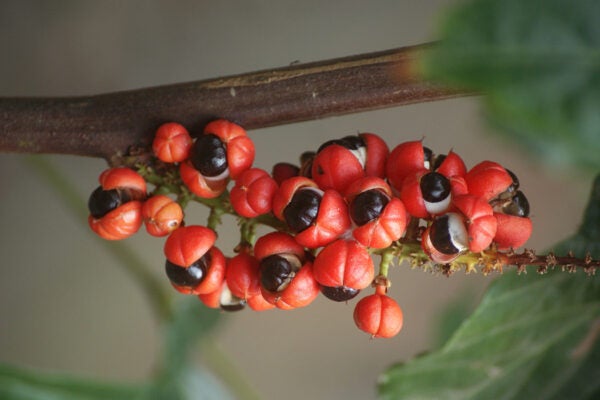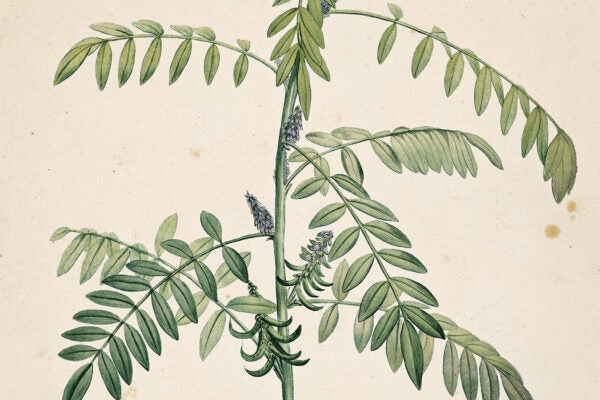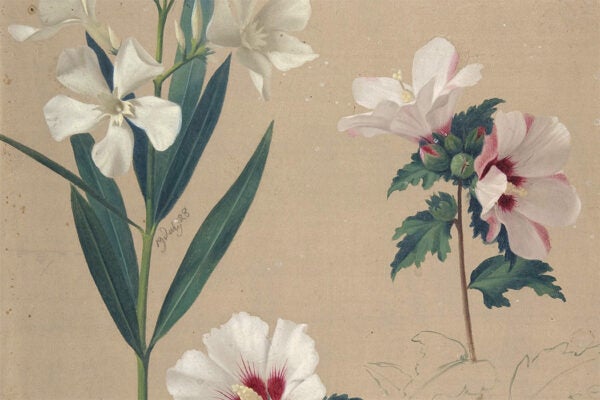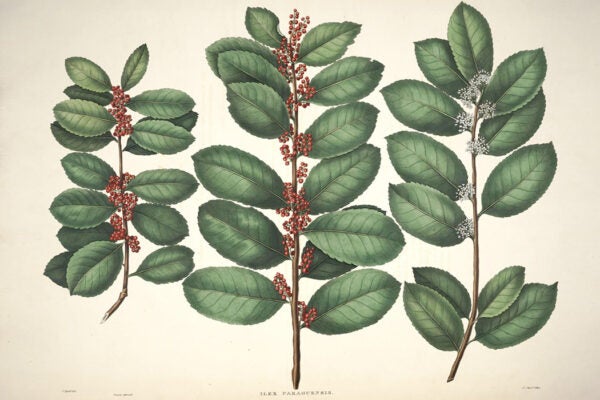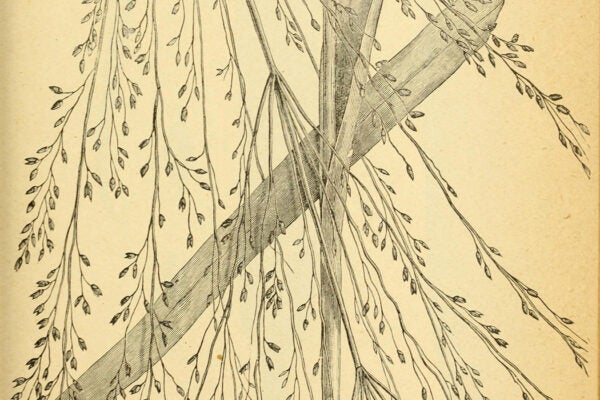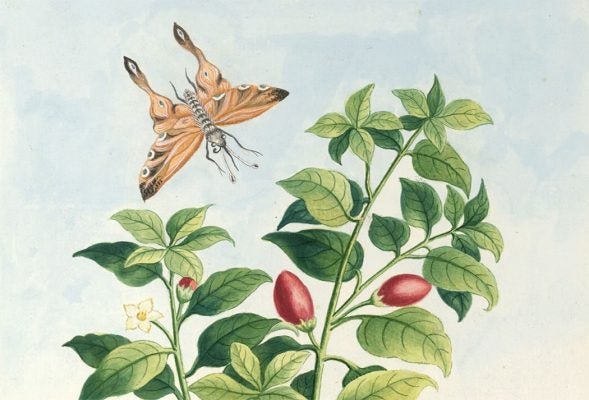Guaraná: Stimulation from the Amazon to the World
Long cherished by Indigenous peoples for its medicinal and stimulating properties, guaraná remains a key element of Brazilian identity.
Plant of the Month: Indigo
The cultivation of this plant for its cherished blue dye tells the story of exploitative agricultural practices—and, hopefully, its reversal.
Plant of the Month: Hibiscus
Nearly synonymous with the global tropics and subtropics, hibiscus symbolizes the Caribbean’s transnational past, present, and future.
Plant of the Month: London Rocket
London rocket was observed in abundance following the Great Fire of London in 1666, but why does this non-native weed still interest English botanists?
Plant of the Month: Frangipani
An ornamental plant whose white flowers hang over graveyards and temples in Southeast Asia presents complicated questions on national belonging and religious identity.
Plant of the Month: Yerba Mate
The biological and cultural profile of mate has affected its global expansion, unlike other plants native to the Americas, such as cacao and maize.
Plant of the Month: Guinea Grass
The West African grass was imported to sustain Caribbean sugar plantations, but it has turned against them, becoming a symbol of resilience and independence.
Plant of the Month: Chili Pepper
Few foods elicit such strong reactions as chili peppers. Why do we love something that hurts so much?
Plant of the Month: Sunflower
With the invasion of Ukraine, it seemed like sunflowers suddenly appeared on the political landscape. Yet they’ve long held symbolic and economic value in Europe.
Plant of the Month: Corpse Lily
The largest flower on the planet—a gigantic, pungent parasite—reveals deep genetic mysteries and unique conservation challenges.
